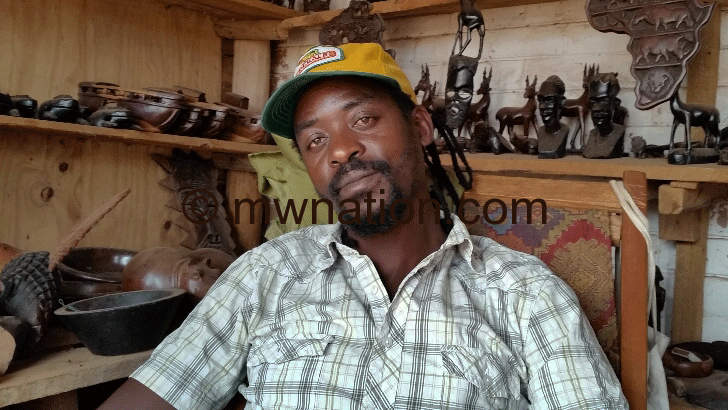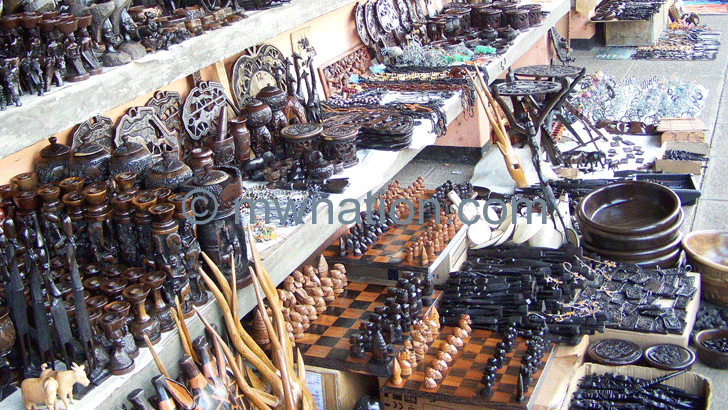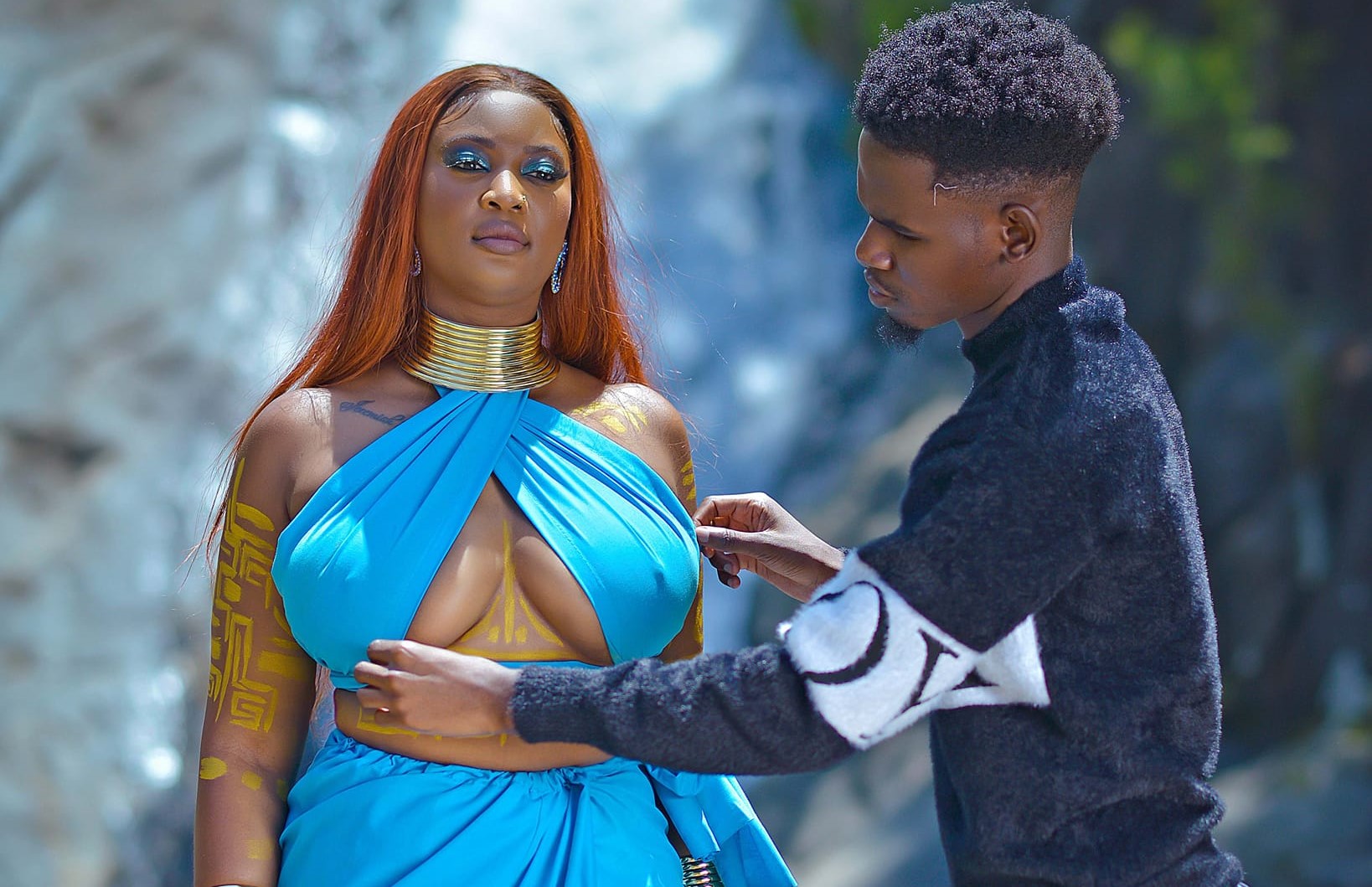Curiosity, curios and tourism
The visual arts is one of the sectors that continues to create a compelling job market for many Malawian artists that put up work for survival and cultural preservation.
The country’s arts galleries, both formal and informal, are overflowing with artworks such as paintings and carvings that act as languages that all people speak and cut across social, economical, education, cultural and racial boundaries.
However, visual arts have been faced with major trends that have resulted in both appreciation of art and shrinking business for the past three years.

is that they have no avenues to showcase their talents
For example, carvings made from indigenous trees such as ebony (msimbiti/mkolong’onjo) plus curios and paintings whose themes revolve around Malawian cultures such as unity and village activities are said to have attracted business.
La Caverna is a Blantyre-based art gallery which stocks and markets different artworks that depict and promote both cultural and historic significance for Malawi. Its sales representative Leaser Kamphinda-Banda said most tourists were attracted in artworks that depict typical Malawian way of life, especially in a village set-up.
“The indigenous stories that are told through the carvings and paintings are key to marketing visual arts. Our customers are always interested to learn how Malawians interact in the villages. Artworks from Mua Mission in Dedza fall into this category,” said Kamphinda-Banda.

However, due to a scarcity of resources such as indigenous trees, artists have started improvising on already existing traditional materials such as mortars and gome which is an instrument used to brew kachasu.
“Lately, we have also seen artists using already existing materials to create artistic impressions there. This is partly because trees have become scarce,” said Kamphinda-Banda.
She said despite receiving a cold shoulder from indigenous Malawians, the industry continues to survive at the mercy of tourists that are passionate about arts.
Dailes Malimbasa, chairperson at Blantyre Curios Market, singled out deforestation and weakening of the local currency as major contributing factors to the dwindling standards and business of visual arts, carvings in particular.
“The weakening of the kwacha has not only affected production companies and organisations, but also the visual arts business which relies on foreigners. Now, due to the devaluation of the kwacha, prices of items have gone up. This is apart from deforestation which has affected the supply of suitable trees for making most of the curios,” said Malimbasa.
He also said aviation policies have also a direct impact on curio business because most buyers are restricted to boarding planes with large chunks of goods.
“If you have noticed these days, artists are into creation of small curios of Malawian game such as elephants, rhinos, lions, buffalos and leopards. Tourists used to meet challenges at airports with those huge curios. But, honestly, this has also affected our business because we used to make money in selling huge curios,” said Malimbasa.
He pleaded with local players such as hotels and embassies to work hand-in-hand with visual artists to procure artworks from them.
Necessity may be the mother of invention, but for curio makers in Mzuzu, curiosity is the underlying line for innovation.
Rasta Noah Kaisi started as a mere curios maker five years ago. Today, he boasts of many forms of arts that have made his shop, Babylon Cant Study Rasta Curiosity Shop, a one-stop-centre in the world of arts.
He twists dreadlocks and makes bracelets, among other artistic aspirations, including local guitars.
“I can make all sorts of things. That is how far my curiosity takes me in the arts industry,” says Kaisi.
His life in the curios business started in 2006 when he visited Nkhata Bay, the hub of curios business in the North, to sharpen up his skills.
After learning all the tricks in the industry, Kaisi returned to Mzuzu to become the first person to open a curios shop in the city, where visual arts is a virgin industry.
“I came to Mzuzu after noticing that there was no curios shop, although today two more shops have been opened.
“Business was not easy. But at least I was able to feed my family. That is why I have not abandoned it. I realised that in business there are always ups and downs,” he says.
In the Northern Region, Mzuzu is the hub of tourism. It acts as a crossroad for tourists visiting attraction areas such as Nyika National Park, Livingstonia Mission, Viphya Plateau, Likoma Island, Vwaza Marsh Wildlife Reserve, Nkhata Bay and Karonga.
This has seen curios business making headway although Kaisi calls it a “seasonal” business.
“It is usually during summer that we make more money. We receive a lot of tourists this time of the year, and that’s when they buy a lot of curios when returning home,” he says.
The challenge for visual artists in the region, says Kaisi, is that they have no avenues to showcase their talents on a daily basis.
This has left the artists to operate individually on the streets or by erecting stalls in market places.
“This is a challenge. We need a place which should act as a one-stop-centre where we can exhibit our works while at the same time making it easy for people to find us,” he says.
Minister of Youth and Culture Grace Chiumia admits that the country needs structures that should support artists in exposing and promoting their talents.
Last year, she promised to look into how best to use the dilapidated Blantyre Cultural Centre (BCC), which is in dire need of rehabilitation.
The ministry also envisages establishing cultural centres in Mzuzu and Lilongwe to have offices for Museum and Antiquities, National Archives, Censorship Board, Department of Arts and Craft and Heritage Association.
But, surprisingly, this idea has never come to fruition since 2012 when it was first presented to relevant officials in Mzuzu who even reserved land for the same.
On numerous occasions, the Department of Culture has been mum on updates on the project. n





